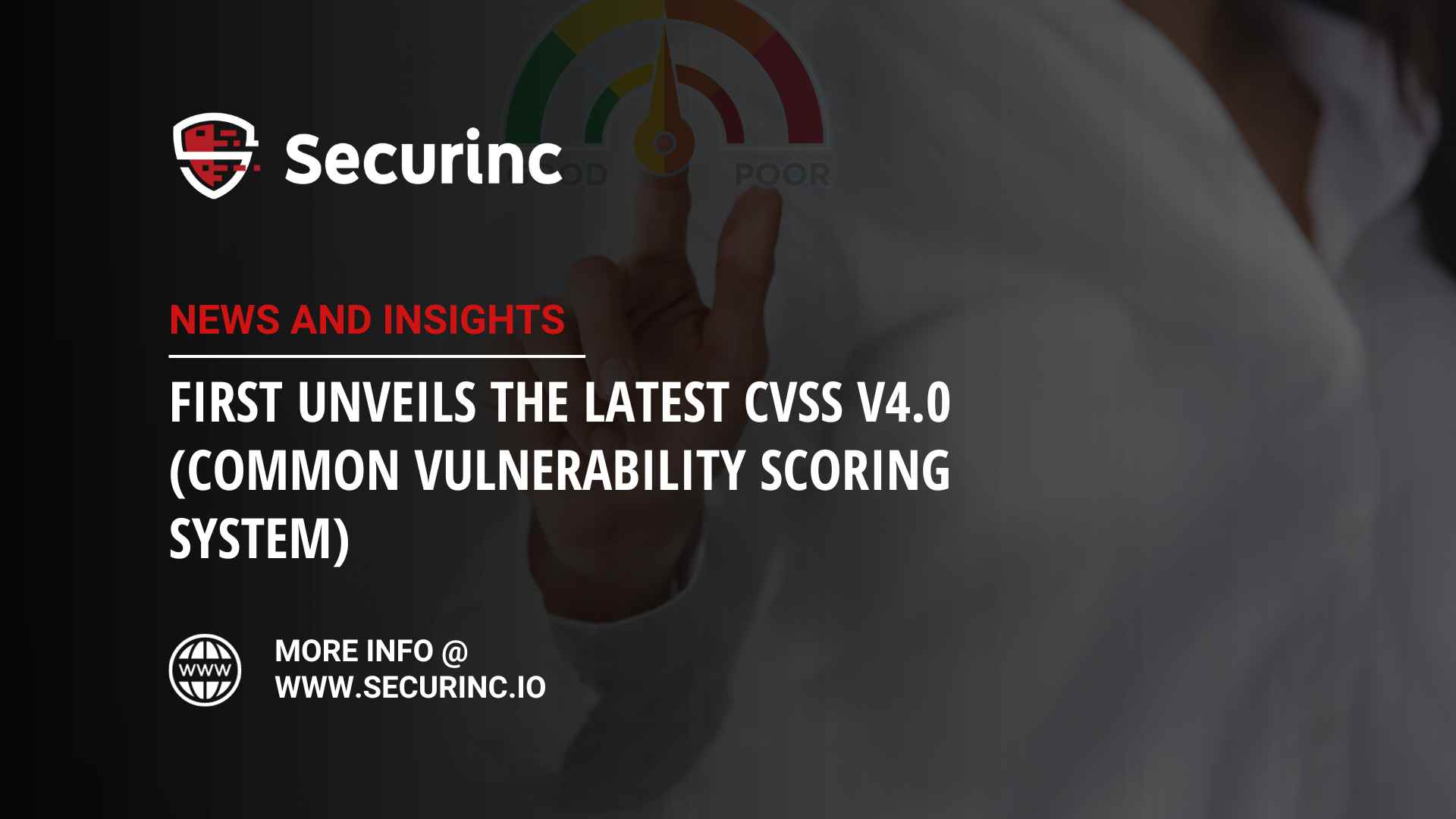
In this article
ToggleIntroduction
Let’s talk about two cybersecurity heavyweights: Penetration Testing and Security Audits. If you’re thinking they’re the same thing, well, you’re not alone, but they’re actually different and play critical roles in the broad field of information security, but each one has its own unique approach and goals. Stick around, and we’ll break down these concepts, comparing and contrasting, so you can understand when to call in a penetration tester and when it’s time for a security audit.
Understanding Penetration Testing and Security Audits
Penetration Testing, often referred to as Pen Testing or ethical hacking, is a simulated cyber attack against your computer system to check for exploitable vulnerabilities. The process involves intentionally attacking your own network or application, using vulnerability assessment tools and techniques as attackers, but with the ultimate goal of improving security. This proactive effort is essential in preventing unauthorized access to critical information and exposure to potential operational disruption.
On the other hand, a security sudit or security assessment is more like a comprehensive review or ‘health checkup’ of a system’s security policies and procedures. This process involves a systematic evaluation of the system’s information, looking for potential weaknesses, risks, or non-compliance with established standards. A security audit tests the strength of the existing security measures and provides specific recommendations to mitigate identified risks and increase the robustness of the system.
Comparing Between Penetration Testing and Security Audits
While both penetration testing and security audits are integral components of a holistic security strategy, they differ in their approaches and objectives.
Penetration testing is more adversarial and hands-on. Its primary goal is to probe and exploit vulnerabilities, simulating the actions of a malicious hacker. It’s somewhat of a ‘stress test’ for your system security, revealing how well your defenses would hold up under a real attack. Penetration testing can expose gaps in security protocols that might not be evident in day-to-day operations or that could be overlooked during an audit.
Conversely, a security audit is more procedural and systematic, akin to an in-depth security inspection. Rather than actively trying to exploit vulnerabilities, an audit seeks to identify potential weaknesses or non-compliance issues by comparing your system’s security measures against a set of predefined standards or benchmarks. It presents an overarching view of the system security and is particularly useful for ensuring compliance with legal and regulatory requirements.

When to Choose a Penetration Test
Organizations should consider choosing penetration testing in several scenarios.
Before and After Implementing a New Network Infrastructure: When an organization is about to implement a new network infrastructure, a penetration test can help identify any potential security vulnerabilities. Similarly, when changes are made to the existing network, a penetration test can ensure that no new risks have been introduced.
Compliance with Regulatory Standards: Certain industries such as healthcare, finance, and retail have stringent regulatory requirements for cybersecurity. Penetration testing can help these organizations comply by demonstrating that they have tested their target system defenses against cyber threats.
Following a Security Breach: In the unfortunate event of a data breach, a penetration test is a crucial part of the response. It can help identify how the breach occurred, ensuring that similar vulnerabilities can be patched to prevent future attacks.
Routine Security Measures: Even without a specific prompt, organizations should perform penetration testing regularly. The threat landscape is continually evolving, and regular testing can help stay ahead of new vulnerabilities and attack methods. The frequency will depend on the organization’s size, industry, and specific risk factors, but generally, annual or bi-annual testing is recommended.
Before Launching a New Application or Software: Before launching an application or software, organizations should conduct a penetration test to identify vulnerabilities that could compromise sensitive data. This is especially important for companies in the tech industry and those dealing with customer information.
It’s essential to remember that penetration testing is not a one-time solution but a component of a multi-layered security strategy. Even after a successful test, organizations should remain vigilant and proactive in managing their cybersecurity.
When to Choose Security Audits
Organizations should consider conducting Security Audits in several circumstances:
Establishing a Security Baseline: At the outset of implementing a security program or system, a security audit can establish a baseline for future assessments and measure progress. It provides a comprehensive view of the current security posture and identifies areas where improvements on the security mechanisms are needed.
Compliance with Regulations and Standards: Just like penetration testing, security audits are crucial in industries with rigorous data and privacy regulations. An audit validates the effectiveness of security controls in place and ensures adherence to industry standards such as ISO 27001, PCI DSS, HIPAA, etc.
Following Major Changes in the Organization: Major organizational changes like mergers, acquisitions, or launching new services can introduce new vulnerabilities. A security audit can help in identifying and mitigating these potential risks.
Regularly Scheduled Audits: Organizations should conduct security audits at regular intervals, irrespective of any specific events or triggers. The frequency can vary depending on the organization’s size, the sensitivity of the data it handles, and the nature of its activities. However, annual audits are a common practice.
After a Security Incident: In the aftermath of a security breach or incident, a security audit can provide valuable insights. It can help understand how the incident occurred, evaluate the effectiveness of the response, and ensure measures are in place to prevent a similar incident in the future.
Regardless of the organization’s nature, size, or type of data handled, regular security audits are paramount in maintaining a robust security posture and fostering a culture of proactive risk management.
Conclusion
Organizations must ensure their security controls are not only adequate but also effective in protecting their business operations and sensitive data. This is where Securinc comes into play.
Securinc is a leader in the field of Security Audits and Penetration Testing, providing organizations with the assurance they need in today’s digital world. With a proven track record and a team of seasoned cybersecurity professionals, Securinc offers unrivaled expertise in conducting vulnerability assessments, assessing risks, and suggesting robust security measures.
Our cybersecurity audit and Penetration Tests adhere strictly to industry standards such as ISO 27001 and NIST CSF. We believe in a holistic approach to cybersecurity, focusing not only on technology but also on the human and process elements, which are often the weakest links in a security chain.
Securinc provides organizations with the peace of mind they need when it comes to cybersecurity. By choosing Securinc, you are choosing an ally committed to protecting your organization from cyber threats and ensuring that you stay ahead of the curve in cybersecurity readiness.
Securinc is a leading cybersecurity consulting firm dedicated to helping businesses navigate the complex world of information security. Since our inception, we have been at the forefront of the cybersecurity industry, offering tailored solutions to organizations of all sizes.
- Securinc Team
- October 30, 2023
- 11:02 pm
- No Comments


